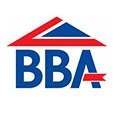Product Spotlight: JUB Airless Spray Plaster
Our JUBOLIN Airless Spray Plaster offers a quick and easy application of sprayed render. It is suitable for a variety of backgrounds including plasterboard, concrete, lime render, cement render, cement fibre boards, chipboards and previously non-absorbent painted surfaces.
Best used with our JUPOL internal paints or decorative finishes.
Benefits of Using Spray on Plaster
The main benefit of using our airless spray plaster is that it’s exceptionally easy to apply, which increases productivity, and fast drying time of 12 hours.
Other benefits include:
- Can be manually applied or sprayed on;
- Offers Superior Thixtropy, which means no slumping;
- Is durable and easy to sand;
- Reduces waste and is cost-effective;
- Has high water vapour permeability;
- Suitable for the JUB range of interior finishes.
JUB Spray Plaster Application Tips
What we recommend is that our JUB airless spray plaster is to be applied in two coats. Each one of them should be 1 to 2 mm thick, which makes the total two-coat application 3 mm.
If you choose to apply the spray plaster manually, you should use a stainless steel smoothing trowel. Spread the compound across the processed surface, to remove excess compound and to smooth the surface as much as possible.
When sprayed on, the best equipment to use is an airless spray machine. Regarding the specifics, the sprayer should provide a service pressure of 180 to 200 bars. The diameter of the spraying nozzle should be 0.035”. For example, the Graco Mark V fits those requirements and is a well-rounded airless spray machine.
Once the two coats have been applied and dried, you should move on to the next step and sand the final coat. Sanding can be performed manually or mechanically. If the sprayed-on surface has been prepared for more demanding decorative treatment, you can use sandpaper № 150. In any other cases, choose between sandpaper № 80 and 120.
If you’d like to learn more about the technical application of our JUBOLIN airless spray plaster, you can always read the literature provided on our website.
Choice of Products
Our most popular products in this range are JUBOLIN P 25 and P 50 Airless Spray Plaster. They both offer an easy application, come in convenient packaging for spraying and achieve an exceptionally smooth surface after application.
The P 25 Fine is a top choice for contractors. It is a compound perfect for demanding and heavily exposed surfaces where you need superb smoothness.
The P 50 Extra fine is an excellent choice for spray-on application. It is the top choice when you need to ensure the absolute smoothness of previously levelled surfaces. The spray plaster is exceptionally suitable for the final levelling of gypsum-cardboards.
Technical Information: The approximate or average consumption (for a two-coat application): JUBOLIN P-25 1.5 – 2.0 kg/m | JUBOLIN P-50 1.5 – 2.0 kg/m
Important: P25 and P50 are not suitable for plasterboard joints, use our Juboglet Universal as a jointing compound with glass fibre mesh tape. For Jubolin P-50 Extra Fine Spray Plaster use sandpapers № 100 or 180.
Would you like to know more about our JUBOLIN Airless Spray Plaster? Contact us on 0116 2879649 or via email at info@jub.org.uk .
You can also contact us at technical@jub.org.uk if you have any technical questions regarding the application of our airless spray plaster.
The post Product Spotlight: JUB Airless Spray Plaster appeared first on JUB Render Systems.


Why Silicone Render is the Best Choice for a Property’s Exterior: Benefits, Application & Aesthetics











